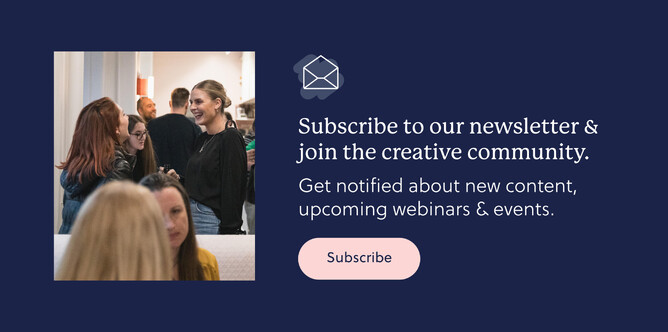Whether you’re a newbie to web design (or looking to upskill) there’s plenty to learn about not only getting the look and feel right - but also creating a rock solid process that will help you get from start to finish without too many road bumps along the way.
So we thought we would share some of our own design expertise, as well as the learnings we have seen many of our partners go through on their journey to becoming exceptional eCommerce website designers.
Of course, website design is a huge topic and one that we could literally talk about forever (just try us!), so we’ll do our best to condense it, while also providing you with some key takeaways to get started.
eCommerce sites - to be or not to be?
We’ll cut right to the chase. eCommerce sites can be intimidating for designers who have just dipped their toes in the water, given the complexity of the site structure and all the other things that don’t have much to do with design.
In fact, we’ve talked to many of our design partners who have said that they are either scared of eCommerce or naively/blindly confident. And of course neither is a great camp to be in. However, with the right processes in place (and a bit of guidance that we’re only too happy to provide), getting the results that your clients are looking for is definitely achievable.
Because the thing is, eCommerce web design is hard to avoid. It grew exponentially during Covid, and if it’s something you enjoy/are interested in (or think you might be) - it can be rather lucrative.
Our only ‘warning’ is that designing eCommerce websites is a different kettle of fish to designing informational websites. The stakes are higher for eCommerce, because a business can thrive or only just survive by the success of the website. So it’s important to recognise that in the first instance.
So they can be super fun, or on the flip side, super frustrating for you and the client. And to improve your chances of them being less of the latter, you need to invest in learning the right way to do it.
Benefits of adding ecommerce design to your services
We believe in being completely upfront and honest, but we also don’t want to put you off because ultimately, done right, eCommerce website design is hugely rewarding and comes with plenty of benefits. They are typically higher value projects and there is always the opportunity to gain further, ongoing design work for things such as email marketing, social media and website updates.
And the main feedback we get from our design partners is that real satisfaction comes from measurable results and impacting the life of a small business owner. One of Rocketspark’s co-founders Grant Johnson says he still recalls helping a client go from around $2,000 of sales per month to over $30,000 per month - and it was definitely a highlight of his web design career.
Preparation before designing is key
The first step in the process is to really understand the clients needs - as in depth as possible. You want to get absolute clarity on the products they are selling, what distribution channels they use and every tiny detail of the products they sell and how they sell them - for example are they selling kits and bundles and are there variations of the same product?
Other questions include:
- How do they want to take payment and will they offer ‘buy now pay later’ such as Laybuy, AfterPay or Zip?
- What are the shipping options for the consumer?
- What (if any) promotions do they run?
- Do they have repeat customers and if so - how does this work?
- What do they want to do with abandoned carts and are email marketing sign-ups important?
- What marketing channels do they use - social media/online marketplaces like The Market/TradeMe/Google?
- Do they have a retail outlet (if so, how many) and where is the stock being shipped from?
- What software do they use and how will this be integrated with the website backend? (For example, Rocketspark only integrates with Xero).
It’s only by truly understanding the customers requirements can you then assess the suitability of the website platform. Here at Rocketspark we know we are suited to simple eCommerce stores for people wanting an easy, straightforward way to manage their own eCommerce website. Whereas large, sophisticated eCommerce businesses will need a much more sophisticated solution. So it's really important to understand right from the outset what the client needs, so then you can recommend the right platform for them.
Get firm on the content and products
Depending on the products and how many there are, you’ll either get the client to upload them - or just make sure to include product uploads in the quote. As an eCommerce store owner, they need to learn how to update and edit products sooner or later, so we often find it’s generally best to get them working on their products and uploading them to the site right from the start. But, if you do offer products as a service, make sure that you include that setup cost in your quote (we'll talk about pricing next).
We know it’s exciting to get underway as soon as possible, but without the products and proper content, everything will grind to a halt. So ensure the client is aware of how crucial it is to have all of this information upfront - to make the process a smoother and much more enjoyable one for all involved.
How to quote for an eCommerce website
There’s so much that goes into an eCommerce website. So from our experience make sure you allow time for providing business advice and plenty of time to design landing pages (it’s essential for best practice SEO to have dedicated pages for products). If the client’s budget is tight, encourage them to let you design at least one landing page for each specific category.
There is also a lot of hand holding, where you’re training your client and showing them how to replicate pages as well as guiding them on the basics of digital marketing so they can achieve the right results and performance from their website. Don’t underestimate that there is more back and forth with eCommerce websites.
The design of an eCommerce website
Sure, an eCommerce website needs to look sharp. But just as important is functionality. So plenty of time needs to be dedicated to thinking about the store structure and user journey. For example, what is the fastest path to find and buy a product? It’s absolutely crucial that you remove any points of friction.
So get the structure right from the outset, and of course, get the client to agree to it too, before moving on. Most website builders are designed in a way to facilitate best practice, but they do each have their interpretations and ways of working - so it’s important to understand the platform and then work out what is possible right at the start, rather than waiting until later.
Don’t forget to include a structure for the landing pages (to cover off SEO) and to recommend to the client that good, professional imagery is also key (actually - plea for it!). It helps to create a cohesive, uniform style that is better for the end user.
Don’t forget digital marketing
Without digital marketing an eCommerce website will have little chance for success. So if it is an area that you aren’t knowledgeable in, stick to your knitting and partner with the right people to help your client lock in the best marketing solutions for their business. Many will innocently believe that if they have a website, they’ll start selling. But the reality is that eCommerce takes a lot of effort and energy - unless of course they are a unicorn who miraculously cracks the formula for success without having to lift a finger.
We see that amongst eCommerce clients who engage digital marketing experts will almost always be much more successful than those who don’t. The key here is to manage expectations that good eCommerce results require focused effort (some of which we cover off here).
Further areas that require careful consideration
There’s so many moving parts to an eCommerce website, and we’d like to cover off as many as possible! So here’s a few more things to think about:
Testing and learning - Get analytics and search console set up so that the client can measure.
Accessibility - Think about someone that can’t see. Do you have good descriptions?
Have a project template - There’s many software options out there that allow you to collaborate easily with your client.




